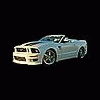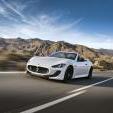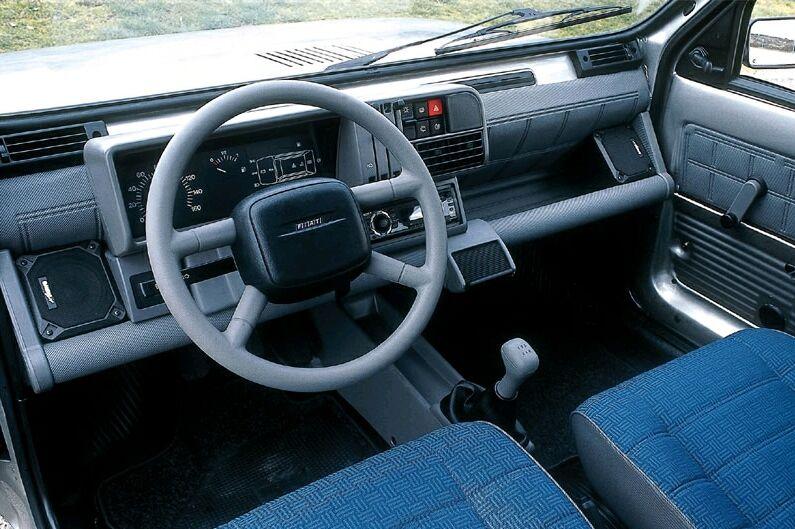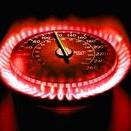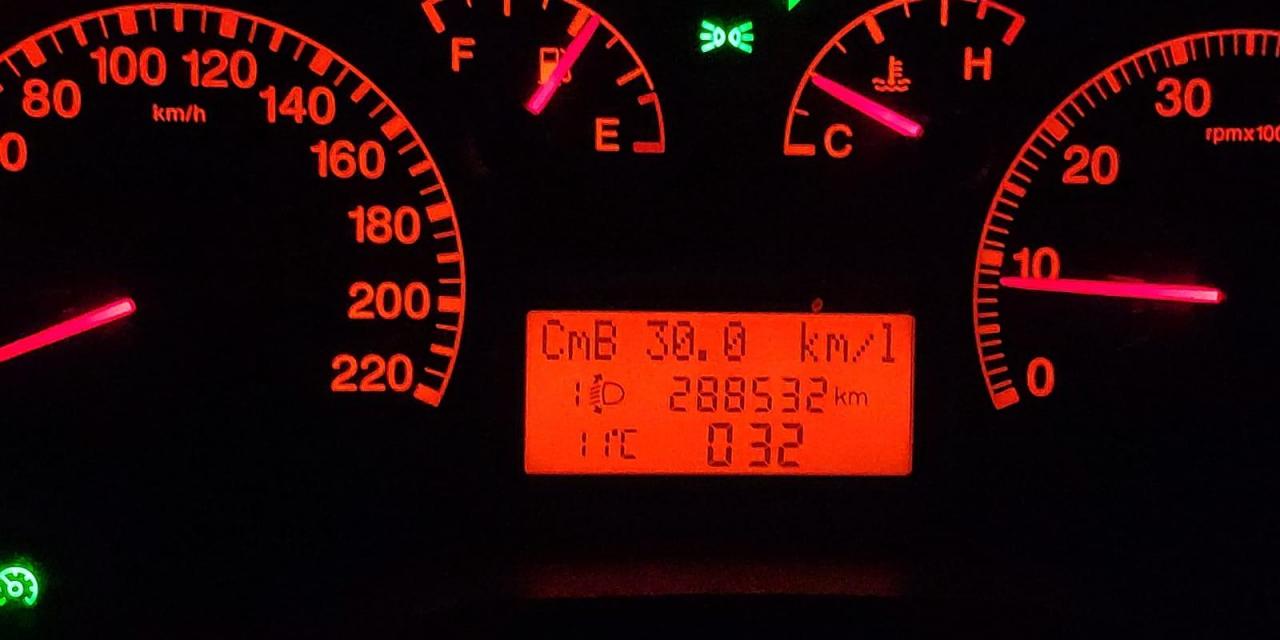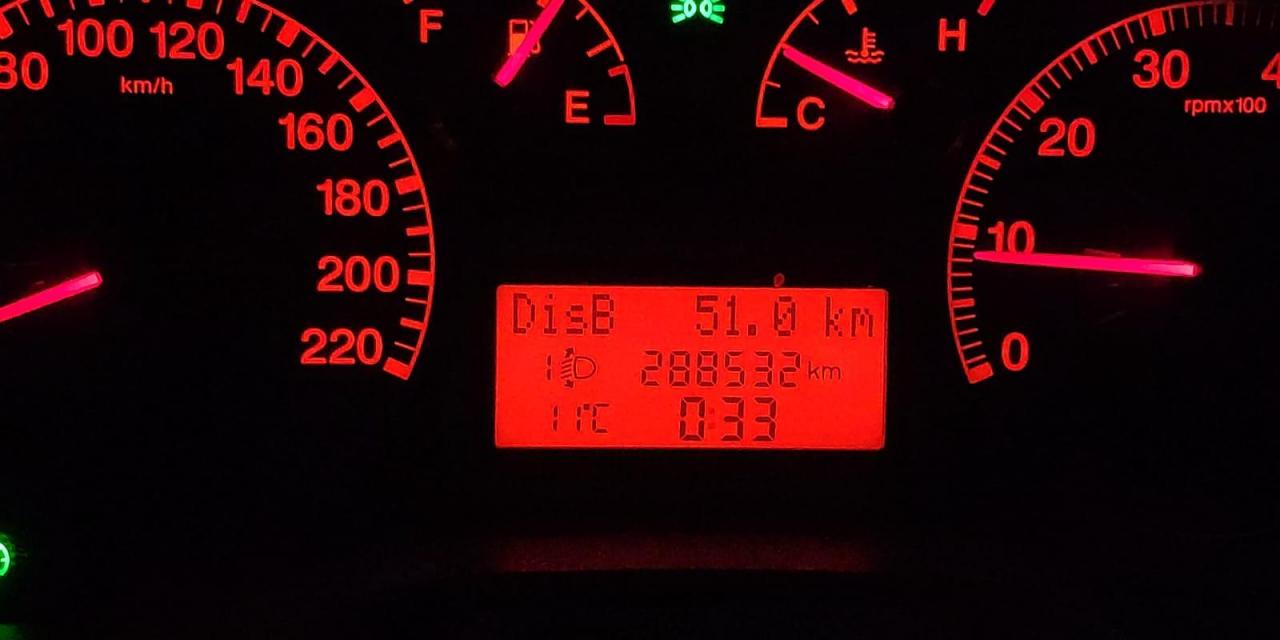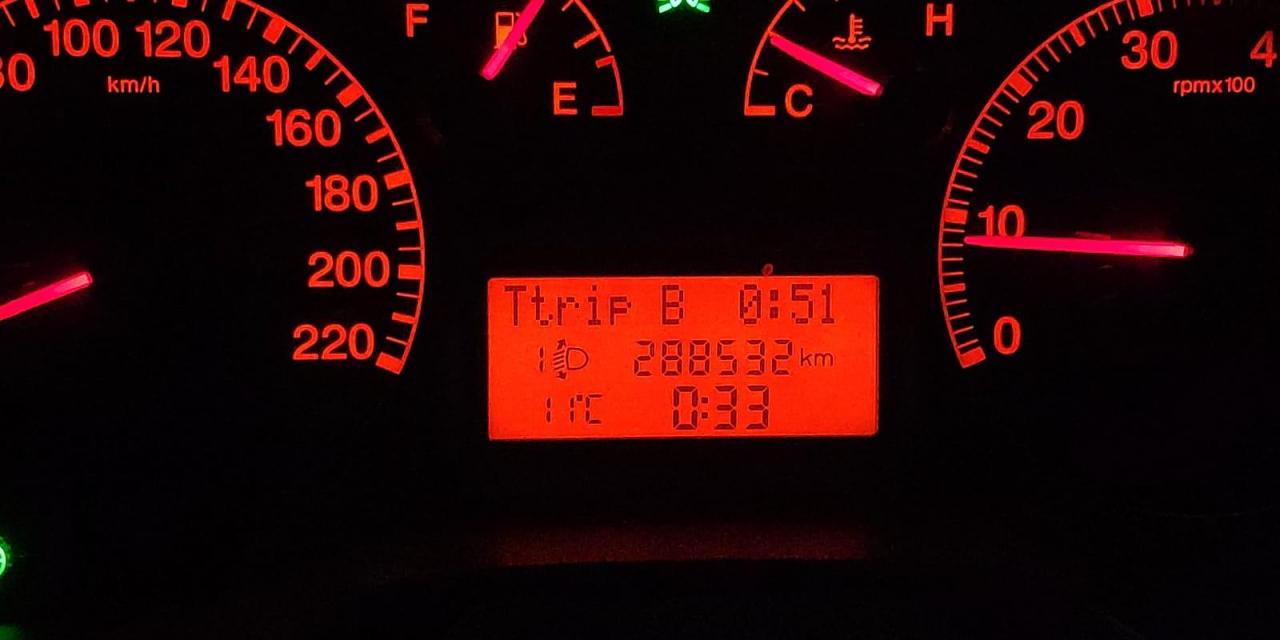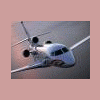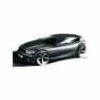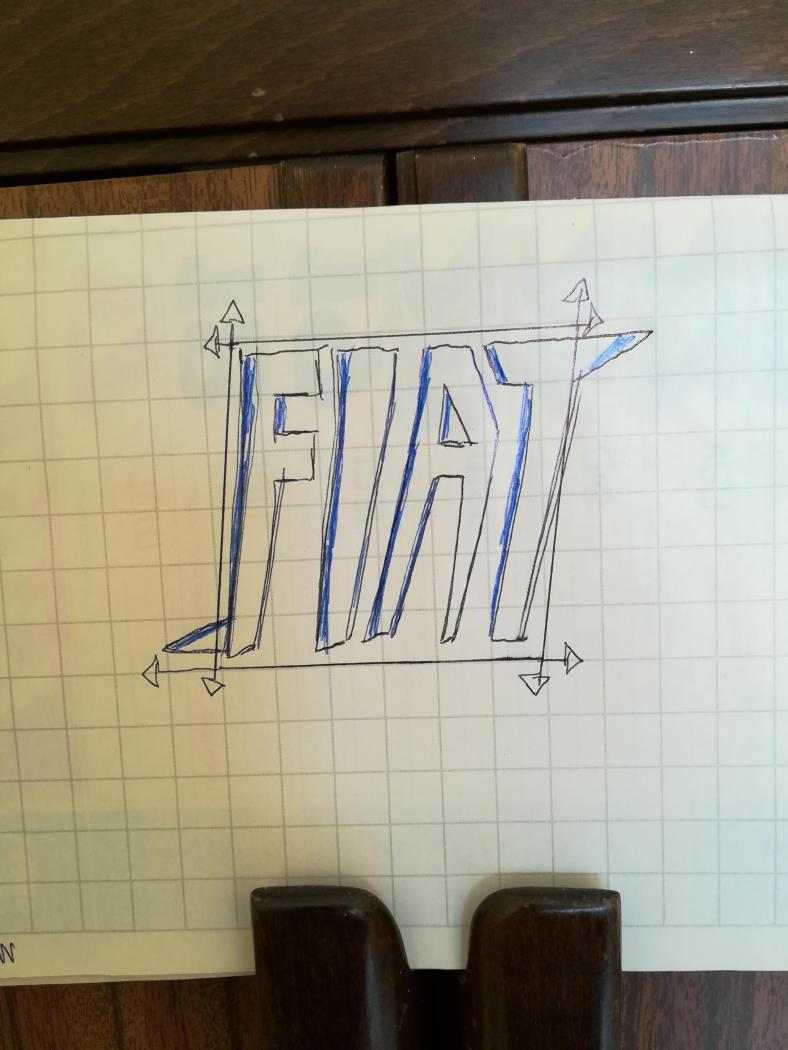Classifica Utenti
Contenuti più Popolari
Stai visualizzando i contenuti con il più alto punteggio, pubblicati in data 19/03/2019 e localizzati Tutte le aree/sezioni
-
E chi dice che PSA, ben più piccola, comprerebbe FCA ? Al limite il rovescio... e per ragioni politiche non potrebbe essere che una grande alleanza. Una fusione renderebbe gli Agnelli soci di maggioranza relativa e ben davanti allo stato francese, alla famiglia Peugeot o ai cinesi. Intollerabile per i francesi afflitti da complesso di superiorità cronica (da notare che vivo in Francia ...). Una alleanza avrebbe molto senso permettendo a psa di andare negli USA e di avere di che salire di gamma e di segmento (in pratica sopra 508 e 5008 non hanno nulla) e a FCA di avere le basi per sviluppare una gamma europea sui segmenti B e C.6 punti
-
6 punti
-
Con il dettaglio che un'azienda privata grande il doppio in un tutti i comparti dimensionali si farebbe comprare da un ente sino-francese parastatale ..... come minimo vedrei governi italiano e americano entrare in tekle4 punti
-
https://www.seattletimes.com/busines...ion-air-crash/ Federal Aviation Administration managers pushed its engineers to delegate wide responsibility for assessing the safety of the 737 MAX to Boeing itself. But safety engineers familiar with the documents shared details that show the analysis included crucial flaws. As Boeing hustled in 2015 to catch up to Airbus and certify its new 737 MAX, Federal Aviation Administration (FAA) managers pushed the agency’s safety engineers to delegate safety assessments to Boeing itself, and to speedily approve the resulting analysis. But the original safety analysis that Boeing delivered to the FAA for a new flight control system on the MAX — a report used to certify the plane as safe to fly — had several crucial flaws. That flight control system, called MCAS (Maneuvering Characteristics Augmentation System), is now under scrutiny after two crashes of the jet in less than five months resulted in Wednesday’s FAA order to ground the plane. Current and former engineers directly involved with the evaluations or familiar with the document shared details of Boeing’s “System Safety Analysis” of MCAS, which The Seattle Times confirmed. The safety analysis: Understated the power of the new flight control system, which was designed to swivel the horizontal tail to push the nose of the plane down to avert a stall. When the planes later entered service, MCAS was capable of moving the tail more than four times farther than was stated in the initial safety analysis document. Failed to account for how the system could reset itself each time a pilot responded, thereby missing the potential impact of the system repeatedly pushing the airplane’s nose downward. Assessed a failure of the system as one level below “catastrophic.” But even that “hazardous” danger level should have precluded activation of the system based on input from a single sensor — and yet that’s how it was designed. The people who spoke to The Seattle Times and shared details of the safety analysis all spoke on condition of anonymity to protect their jobs at the FAA and other aviation organizations. Both Boeing and the FAA were informed of the specifics of this story and were asked for responses 11 days ago, before the second crash of a 737 MAX last Sunday. Late Friday, the FAA said it followed its standard certification process on the MAX. Citing a busy week, a spokesman said the agency was “unable to delve into any detailed inquiries.” Boeing responded Saturday with a statement that “the FAA considered the final configuration and operating parameters of MCAS during MAX certification, and concluded that it met all certification and regulatory requirements.” Adding that it is “unable to comment … because of the ongoing investigation” into the crashes, Boeing did not respond directly to the detailed description of the flaws in MCAS certification, beyond saying that “there are some significant mischaracterizations.” Several technical experts inside the FAA said October’s Lion Air crash, where the MCAS has been clearly implicated by investigators in Indonesia, is only the latest indicator that the agency’s delegation of airplane certification has gone too far, and that it’s inappropriate for Boeing employees to have so much authority over safety analyses of Boeing jets. “We need to make sure the FAA is much more engaged in failure assessments and the assumptions that go into them,” said one FAA safety engineer. Certifying a new flight control system Going against a long Boeing tradition of giving the pilot complete control of the aircraft, the MAX’s new MCAS automatic flight control system was designed to act in the background, without pilot input. It was needed because the MAX’s much larger engines had to be placed farther forward on the wing, changing the airframe’s aerodynamic lift. Designed to activate automatically only in the extreme flight situation of a high-speed stall, this extra kick downward of the nose would make the plane feel the same to a pilot as the older-model 737s. Boeing engineers authorized to work on behalf of the FAA developed the System Safety Analysis for MCAS, a document which in turn was shared with foreign air-safety regulators in Europe, Canada and elsewhere in the world. The document, “developed to ensure the safe operation of the 737 MAX,” concluded that the system complied with all applicable FAA regulations. Yet black box data retrieved after the Lion Air crash indicates that a single faulty sensor — a vane on the outside of the fuselage that measures the plane’s “angle of attack,” the angle between the airflow and the wing — triggered MCAS multiple times during the deadly flight, initiating a tug of war as the system repeatedly pushed the nose of the plane down and the pilots wrestled with the controls to pull it back up, before the final crash. On Wednesday, when announcing the grounding of the 737 MAX, the FAA cited similarities in the flight trajectory of the Lion Air flight and the crash of Ethiopian Airlines Flight 302 last Sunday. Investigators also found the Ethiopian plane’s jackscrew, a part that moves the horizontal tail of the aircraft, and it indicated that the jet’s horizontal tail was in an unusual position — with MCAS as one possible reason for that. Investigators are working to determine if MCAS could be the cause of both crashes. Delegated to Boeing The FAA, citing lack of funding and resources, has over the years delegated increasing authority to Boeing to take on more of the work of certifying the safety of its own airplanes. Early on in certification of the 737 MAX, the FAA safety engineering team divided up the technical assessments that would be delegated to Boeing versus those they considered more critical and would be retained within the FAA. But several FAA technical experts said in interviews that as certification proceeded, managers prodded them to speed the process. Development of the MAX was lagging nine months behind the rival Airbus A320neo. Time was of the essence for Boeing. A former FAA safety engineer who was directly involved in certifying the MAX said that halfway through the certification process, “we were asked by management to re-evaluate what would be delegated. Management thought we had retained too much at the FAA.” “There was constant pressure to re-evaluate our initial decisions,” the former engineer said. “And even after we had reassessed it … there was continued discussion by management about delegating even more items down to the Boeing Company.” Even the work that was retained, such as reviewing technical documents provided by Boeing, was sometimes curtailed. “There wasn’t a complete and proper review of the documents,” the former engineer added. “Review was rushed to reach certain certification dates.” When time was too short for FAA technical staff to complete a review, sometimes managers either signed off on the documents themselves or delegated their review back to Boeing. “The FAA managers, not the agency technical experts, have final authority on delegation,” the engineer said. Inaccurate limit In this atmosphere, the System Safety Analysis on MCAS, just one piece of the mountain of documents needed for certification, was delegated to Boeing. The original Boeing document provided to the FAA included a description specifying a limit to how much the system could move the horizontal tail — a limit of 0.6 degrees, out of a physical maximum of just less than 5 degrees of nose-down movement. That limit was later increased after flight tests showed that a more powerful movement of the tail was required to avert a high-speed stall, when the plane is in danger of losing lift and spiraling down. The behavior of a plane in a high angle-of-attack stall is difficult to model in advance purely by analysis and so, as test pilots work through stall-recovery routines during flight tests on a new airplane, it’s not uncommon to tweak the control software to refine the jet’s performance. After the Lion Air Flight 610 crash, Boeing for the first time provided to airlines details about MCAS. Boeing’s bulletin to the airlines stated that the limit of MCAS’s command was 2.5 degrees. That number was new to FAA engineers who had seen 0.6 degrees in the safety assessment. “The FAA believed the airplane was designed to the 0.6 limit, and that’s what the foreign regulatory authorities thought, too,” said an FAA engineer. “It makes a difference in your assessment of the hazard involved.” The higher limit meant that each time MCAS was triggered, it caused a much greater movement of the tail than was specified in that original safety analysis document. The former FAA safety engineer who worked on the MAX certification, and a former Boeing flight controls engineer who worked on the MAX as an authorized representative of the FAA, both said that such safety analyses are required to be updated to reflect the most accurate aircraft information following flight tests. “The numbers should match whatever design was tested and fielded,” said the former FAA engineer. But both said that sometimes agreements were made to update documents only at some later date. “It’s possible the latest numbers wouldn’t be in there, as long as it was reviewed and they concluded the differences wouldn’t change the conclusions or the severity of the hazard assessment,” said the former Boeing flight controls engineer. If the final safety analysis document was updated in parts, it certainly still contained the 0.6 limit in some places and the update was not widely communicated within the FAA technical evaluation team. “None of the engineers were aware of a higher limit,” said a second current FAA engineer. The discrepancy over this number is magnified by another element in the System Safety Analysis: The limit of the system’s authority to move the tail applies each time MCAS is triggered. And it can be triggered multiple times, as it was on the Lion Air flight. One current FAA safety engineer said that every time the pilots on the Lion Air flight reset the switches on their control columns to pull the nose back up, MCAS would have kicked in again and “allowed new increments of 2.5 degrees.” “So once they pushed a couple of times, they were at full stop,” meaning at the full extent of the tail swivel, he said. Peter Lemme, a former Boeing flight controls engineer who is now an avionics and satellite-communications consultant, said that because MCAS reset each time it was used, “it effectively has unlimited authority.” Swiveling the horizontal tail, which is technically called the stabilizer, to the end stop gives the airplane’s nose the maximum possible push downward. “It had full authority to move the stabilizer the full amount,” Lemme said. “There was no need for that. Nobody should have agreed to giving it unlimited authority.” On the Lion Air flight, when the MCAS pushed the jet’s nose down, the captain pulled it back up, using thumb switches on the control column. Still operating under the false angle-of-attack reading, MCAS kicked in each time to swivel the horizontal tail and push the nose down again. The black box data released in the preliminary investigation report shows that after this cycle repeated 21 times, the plane’s captain ceded control to the first officer. As MCAS pushed the nose down two or three times more, the first officer responded with only two short flicks of the thumb switches. At a limit of 2.5 degrees, two cycles of MCAS without correction would have been enough to reach the maximum nose-down effect. In the final seconds, the black box data shows the captain resumed control and pulled back up with high force. But it was too late. The plane dived into the sea at more than 500 miles per hour. System failed on a single sensor The bottom line of Boeing’s System Safety Analysis with regard to MCAS was that, in normal flight, an activation of MCAS to the maximum assumed authority of 0.6 degrees was classified as only a “major failure,” meaning that it could cause physical distress to people on the plane, but not death. In the case of an extreme maneuver, specifically when the plane is in a banked descending spiral, an activation of MCAS was classified as a “hazardous failure,” meaning that it could cause serious or fatal injuries to a small number of passengers. That’s still one level below a “catastrophic failure,” which represents the loss of the plane with multiple fatalities. The former Boeing flight controls engineer who worked on the MAX’s certification on behalf of the FAA said that whether a system on a jet can rely on one sensor input, or must have two, is driven by the failure classification in the system safety analysis. He said virtually all equipment on any commercial airplane, including the various sensors, is reliable enough to meet the “major failure” requirement, which is that the probability of a failure must be less than one in 100,000. Such systems are therefore typically allowed to rely on a single input sensor. But when the consequences are assessed to be more severe, with a “hazardous failure” requirement demanding a more stringent probability of one in 10 million, then a system typically must have at least two separate input channels in case one goes wrong. Boeing’s System Safety Analysis assessment that the MCAS failure would be “hazardous” troubles former flight controls engineer Lemme because the system is triggered by the reading from a single angle-of-attack sensor. “A hazardous failure mode depending on a single sensor, I don’t think passes muster,” said Lemme. Like all 737s, the MAX actually has two of the sensors, one on each side of the fuselage near the cockpit. But the MCAS was designed to take a reading from only one of them. Lemme said Boeing could have designed the system to compare the readings from the two vanes, which would have indicated if one of them was way off. Alternatively, the system could have been designed to check that the angle-of-attack reading was accurate while the plane was taxiing on the ground before takeoff, when the angle of attack should read zero. “They could have designed a two-channel system. Or they could have tested the value of angle of attack on the ground,” said Lemme. “I don’t know why they didn’t.” The black box data provided in the preliminary investigation report shows that readings from the two sensors differed by some 20 degrees not only throughout the flight but also while the airplane taxied on the ground before takeoff. No training, no information After the Lion Air crash, 737 MAX pilots around the world were notified about the existence of MCAS and what to do if the system is triggered inappropriately. Boeing insists that the pilots on the Lion Air flight should have recognized that the horizontal stabilizer was moving uncommanded, and should have responded with a standard pilot checklist procedure to handle what’s called “stabilizer runaway.” If they’d done so, the pilots would have hit cutoff switches and deactivated the automatic stabilizer movement. Boeing has pointed out that the pilots flying the same plane on the day before the crash experienced similar behavior to Flight 610 and did exactly that: They threw the stabilizer cutoff switches, regained control and continued with the rest of the flight. However, pilots and aviation experts say that what happened on the Lion Air flight doesn’t look like a standard stabilizer runaway, because that is defined as continuous uncommanded movement of the tail. On the accident flight, the tail movement wasn’t continuous; the pilots were able to counter the nose-down movement multiple times. In addition, the MCAS altered the control column response to the stabilizer movement. Pulling back on the column normally interrupts any stabilizer nose-down movement, but with MCAS operating that control column function was disabled. These differences certainly could have confused the Lion Air pilots as to what was going on. Since MCAS was supposed to activate only in extreme circumstances far outside the normal flight envelope, Boeing decided that 737 pilots needed no extra training on the system — and indeed that they didn’t even need to know about it. It was not mentioned in their flight manuals. That stance allowed the new jet to earn a common “type rating” with existing 737 models, allowing airlines to minimize training of pilots moving to the MAX. Dennis Tajer, a spokesman for the Allied Pilots Association at American Airlines, said his training on moving from the old 737 NG model cockpit to the new 737 MAX consisted of little more than a one-hour session on an iPad, with no simulator training. Minimizing MAX pilot transition training was an important cost saving for Boeing’s airline customers, a key selling point for the jet, which has racked up more than 5,000 orders. The company’s website pitched the jet to airlines with a promise that “as you build your 737 MAX fleet, millions of dollars will be saved because of its commonality with the Next-Generation 737.” In the aftermath of the crash, officials at the unions for both American and Southwest Airlines pilots criticized Boeing for providing no information about MCAS, or its possible malfunction, in the 737 MAX pilot manuals. An FAA safety engineer said the lack of prior information could have been crucial in the Lion Air crash. Boeing’s safety analysis of the system assumed that “the pilots would recognize what was happening as a runaway and cut off the switches,” said the engineer. “The assumptions in here are incorrect. The human factors were not properly evaluated.” On Monday, before the grounding of the 737 MAX, Boeing outlined “a flight control software enhancement for the 737 MAX,” that it’s been developing since soon after the Lion Air crash. According to a detailed FAA briefing to legislators, Boeing will change the MCAS software to give the system input from both angle-of-attack sensors. It will also limit how much MCAS can move the horizontal tail in response to an erroneous signal. And when activated, the system will kick in only for one cycle, rather than multiple times. Boeing also plans to update pilot training requirements and flight crew manuals to include MCAS. These proposed changes mirror the critique made by the safety engineers in this story. They had spoken to The Seattle Times before the Ethiopian crash. The FAA said it will mandate Boeing’s software fix in an airworthiness directive no later than April.4 punti
-
4 punti
-
Più che altro...se hai appena detto che gli italiani devono svecchiare il parco circolante e il tuo sogno è lasciare colonnine ovunque, non puoi in 5 minuti - dire che non usi l'elettrica del ministero perchè è automatica - dire che hai una Golf di 12 anni - dire che hai appena preso un suv diesel. Della serie "armiamoci e partite"4 punti
-
Bentley presenta la Continental GT con il "piccolo" V8 4.0 litri TwinTurbo. Ora la piccola della "B Alata" eroga 550 CV e 700 Nm di coppia. Lo sprint da ferma a 100 km/h viene coperto in 4.0 secondi (4.1 per la Cabrio) e la velocità massima è di 318 km/h. Rispetto alla W12 ci sono diversi cerchi in lega da 20" con la possibilità di arrivare fino a 22" (optional). Colpo d'occhio per distinguerla dalla W12 è lo scarico: si passa dal doppio scarico ovale ad uno quadrato a 4 uscite. All'interno l'info-telematica presenta di serie lo schermo touch da 12.3", mentre è optional il Bentley Rotating Display. Il sistema Dynamic Ride è optional. Bentley Continental GTC V83 punti
-
3 punti
-
State sereni che i cavalli li può utilizzare tutti, non credo che abbiano messo topo gigio a metter giù il design del motore. Dai su siamo seri, sbagliare a dimensionare il sistema di raffreddamento è un errore da gente che non ha idea di quello che sta facendo. Va bene tutto, ma voglio sperare che il motorista non sia uno assunto dalla gig-nikko... La top Speed dipende da 38440 parametri, partendo dalla trazione in uscita di curva, per finire col carico aerodinamico passando per il grip delle coperture. Anche la McLaren Honda col motore da gp2 fece segnare i 340 in qualche circuito, eppure tutti sappiamo che quel propulsore faceva cagare. Colgo l'occasione per far notare i valori fatti segnare da Hamilton. Ricordo che l'obiettivo di un GP di F1 è chiudere il giro nel minor tempo possibile non devastare lo Speed trap in stile drag race... Detto questo, siamo nella cacca, siamo in ansia, ma voglio aspettare almeno il Bahrain prima di farmi idee sul nulla... ☏ BLA-L29 ☏3 punti
-
Il weekend di gara l'ho visto ma non sono riuscito a commentare, tuttavia, avete detto tutto voi e la delusione è forte. Molto bene il gruppone centrale tutto attaccato vicino vicino dove in un decimo succede il mondo e i top 3 non posso permettersi azzardi. È la prima gara quindi...testa bassa e lavorare... Scusate, l'abitudine ???3 punti
-
Quindi la ufficializzeranno dopo lo smontaggio dello lo stand a Ginevra... Per il resto vabbene che alla fine l'ultima parola è di MM e soprattutto della proprietà, però tutti questi avvicendamenti in rapida successione non è che fanno bene ai brand (prodotti, rete, ecc), anche perchè nessuno di questi responsabili può approntare alcuna decisione.3 punti
-
Figurati se i consumatori sanno chi sono i manager e se li cambiano. Quello che fa male è la mancanza di continuità di prodotto. I continui ririririlanci. ☏ E5803 ☏3 punti
-
Ottimo. Non hai risposto a nessuna delle mie affermazioni. Cosa ci capano le spese in conto capitale (e usiamo l'italiano perdio...) con la disorganizzazione di cui ti ho parlato? Io ti ho semplicemente detto che prima hanno avuto problemi a produrle, poi hanno avuto problemi a spedirle. Questa per me non è organizzazione, della finanza ci conta niente. Per la qualità ti cito i paraurti che si staccano e tu mi rispondi che va più forte di una 458. Forse quest'ultima a fine giro ci arriva con entrambi i paraurti. Almeno spero. Sicurezza a livelli di benchmark? Bene. Son contento. Chi l'ha criticata? Io non scherzo: il prodotto non è eccezionale. Per esserlo dovrebbe essere assemblato e ingegnerizzato meglio. Io rispondo alle mie affermazioni con queste: macchina di 1 mese di età macchine da consegnare. L'ultima è il montante a perfettamente ignerizzato. Relativamente alla capitalizzazione (per favore, market cap non si può sentire in un forum di macchine come questo, l'italiano per ora è ancora in uso, non perdiamoci in inutili tecnicismi che confondono i lettori scrausi come me) ne son contentissimo, ma sai meglio di me che più di qualche analista sta cominciando a consigliare di vendere un po' di azioni tesla e magari prendere qualche azione ford o vw, visto che la prima non ha ancora generato un centesimo e nel contempo divora liquidità come mia madre divora ferrero rocher.3 punti
-
oppure che l'Italia Turrita o lo zio Sam aprano il borsellino come ha fatto Marianna verso gli alsaziani , tra l'altro in barba a tutte le norme europee . Facile fare gli splendidi coi soldi di mammà .... P.S. per favore non mi citate gli aiuti fatto dallo Stato a Fiat, non fosse altro che : 1) sono almeno 20 anni che non ne vengono più dati di diretti 2) Lo facevano tutti. 3) I concorrenti continuano a riceverne .3 punti
-
Poiché per cause misteriose è sparito il topic che trattava lo stesso argomento, ripartiamo da zero. In questa discussione parleremo dei consumi realizzati con le nostre auto su percorsi abituali. La cosa che probabilmente salterà all'occhio, sarà la differenza dei dati, a parità di auto e scenario: come ben sappiamo infatti, il consumo di carburante viene inficiato da numerose variabili. Inizio io, pubblicando la mia migliore prestazione rilevata da CdB: extraurbano con poco traffico, su un tratto di 50 km, dove ho trovato solamente un semaforo rosso. Accortezze usate: accelerazioni non troppo brusche, lunghissime decelerazioni con marce alte, mai andato oltre i 90 km/h. 30 km/l con la GPunto 1.3 MJT 90 CV: ibride, mi fate un baffo2 punti
-
https://f1ingenerale.com/wec-il-futuro-della-classe-hypercar Un bel riassuntone più le ultime novità sul parto della prossima classe Lmp1. a questo giro L'Aco ha ceduto, classe aperta all'universo mondo, race what you bring e BoP per tutti. Amen.2 punti
-
Giusto per capire come si sta muovendo un altro colosso sull'elettrico e capire chi sono i veri competitors https://www.press.bmwgroup.com/global/article/attachment/T0293244EN/4267902 punti
-
insomma hanno sacrificato tutto al dio denaro, anche le autorita' certificatrici..2 punti
-
Scusa, non è la tecnologia dell'idrogeno ad essere campata in aria. L'idrogeno liquido si utilizza da più di 50 anni in astronautica , quindi il know how esiste . Sono i problemi , ancora non affrontati, di produzione e stoccaggio su larga scala a prezzi umani , senza incidere sull'ambiente ed in maniera economica a non essere stati ancora affrontati . Per capirci, solo ora si comincia a pensare allo stoccaggio di LH2 sui sottomarini per propulsori AIP a celle. E parliamo di campi dove i costi sono una variabile trascurabile e dove i numeri prodotti sono bassi . Per questo credo non sia una soluzione a breve/medio termine.2 punti
-
Diciamo che prima che gli Ovini mollino la presa , deve passarne acqua sotto i ponti . Detto questo voglio vedere cosa direbbe la UE ( e Donaldo ) sulla fusione/cessione di un'azienda privata ad una compartecipata dallo stato . Certo che Fiat farebbe la fine della Simca2 punti
-
A4 nello stesso periodo ha perso molto di più malgrado la « santa » SW. Tra settembre e gennaio e passata da quasi 60k a poco più di 20k...2 punti
-
2 punti
-
Volete la ciliegina? Eccola! ? Boeing 737 Max pilots didn't have flight simulators, and trained on iPads instead It was determined that, at least in the case of the Max, pilots with prior 737 experience learned about the new plane using an iPad for two hours, as well as a 13-page handbook of differences between the Max and earlier models. It is claimed Boeing had not managed to get a simulator ready during a time it was trying to get the plane completed, and didn't have all the data available. "They were building the airplane and still designing it," advised Southwest Pilots Association training and standards chair Greg Bowen. "The data to build a simulator didn't become available until about when the plane was ready to fly." Crucially the training did not cover any of the new software that would be used on the 737 Max. Boeing is also said to have also failed to mention to American Airlines pilots about the new software, under the guise of not wanting to "inundate" them with information. "When you find out there are systems on it that are wildly different that affect the performance of the aircraft, having a simulator is part of a safety culture," according to American Airlines pilot union spokesman Dennis Tajer. "It can be the difference between a safe, recoverable flight and one that makes the newspapers." Following complaints, Boeing advised American Airlines and Southwest pilots there would be a software fix provided within weeks, though without the need for further training. On hearing this, union pilots believed they were able to fly the plane safely under current training conditions, without the need for a simulator. The FAA has also been questioned by US lawmakers over why more substantial training was not required by the regulator. Rep. Peter DeFazio, chairman of the House transportation committee told the FAA "this is essentially a different airplane, how is it that it was certified without prior pilot retraining?" Boeing is said to be abstaining from introducing changes to its training in the wake of the criticism, according to a person familiar with the matter. Regulators like the FAA and the EU Aviation Safety Agency are also steering clear of proposing more simulator-based training, with computer-based versions like the iPad thought to be the "best way" to inform pilots on the changes. https://appleinsider.com/articles/19/03/18/boeing-737-max-pilots-didnt-have-flight-simulators-and-trained-on-ipads-instead2 punti
-
2 punti
-
Ricordo che per aver scritto che metà delle Giulia erano spinte fortemente a km 0, mi è arrivato anche un warning ... a quanto pare avevo registrato solo una realtà della rete commerciale (e non solo a Roma a quanto si vede). @stev66 grazie per lo schema ma al netto di Mito e Giulietta ....la Stelvio cala e la Giulia crolla. Alfa attualmente se non ci saranno recuperi nei prossimi mesi è proiettata sulle 60/70.000 unità annue (Europa circa 4000/4500 x 12 mesi, USA 1300/1400 unità per mese x 12 mesi).2 punti
-
non è che sbagli semplicemente la dimensione del sistema sistema di raffreddamento, è che il sistema di raffreddamneto che ti porti dietro con quel cocnetto aerodinamico può darti problemi, era successo anche alla Sauber quando dall'ottima C31, che arrivò a podio 2 volte, si trovarono l'anno dopo una C32 pessima, anche per via del concetto size-0 troppo estremizzato. Non dico che il caso è questo, ma non è di certo impossibile.. detto ciò trovo questa analisi abbastanza plausibile https://it.motorsport.com/f1/news/ferrari--4355468/4355468/2 punti
-
Il punto non è quanti cavalli ha il motore Ferrari, il punto è quanti ne può utilizzare.2 punti
-
2 punti
-
Fiat Panda 4x4 prima serie, tenuta molto molto bene nel suo bel verde militare, proposto in alternativa al grigio metallizzato. Solo le coppe ruota non sono le sue:2 punti
-
Trarre conclusioni sulla potenza del motore basati sullo Speed trap non ha alcun senso, lo sapete vero? ☏ BLA-L29 ☏2 punti
-
Se ha preso la 120 CV forse l'ha evitata comunque. In ogni caso non ha fatto una gran figura. Perché uno è sì chiaramente libero di far ciò che vuole, ma è comunque una figura di spicco di questo governo, che sta dimostrando di fare esattamente il contrario di ciò che professa e sostiene fino al fastidio. Se non ci crede lui per primo, figuriamoci noi.2 punti
-
Due parole molto semplici sull'idrogeno: - produzione di idrogeno non è economica (spendi più energia per la sua produzione che quella che ottieni nell'utilizzo dell'idrogeno, almeno con gli attuali metodi di produzione; - ha una densità energetica estremamente bassa pertanto ci vorrebbero bombole ad elevata pressione - L'idrogeno non lo si trova in natura in quanto è l'elemento più piccolo della tavola periodica e il campo gravitazionale non lo trattiene, quindi si l'idrogeno come molecola (H2) nell'aria non lo si trova perchè vola via. - l'idrogeno porta "infragilimento da idrogeno" nei metalli visto che è una molecola estremamente piccola lui penetra ovunque e se ne va. (non crediate che una "bombola lo tiene fermo al suo interno inoltre più pressione più lui esce, più temperatura e più lui esce.). Non è una strada da attuare. a meno di "rivoluzionarie" scoperte. Allo stato attuale le batterie che danno la migliore resa sono quelle agli ioni di Litio (lo si può vedere nel grafico sottostante) e già cosi come potete vedere il peso di una batteria è estremamente elevato. Credo che la ricerca energetica stia veramente puntando su batteria allo stato solido il fatto è che, come ogni cosa, un conto e teorizzarla, un'altro conto è applicarla a livello produttivo.2 punti
-
L'hai mai provato almeno a usarlo quel touchscreen? La qualità dell user experience e il numero di servizi integrati che offre? L'impressione era di salire a bordo di un veicolo che sta 15 anni avanti ad altri veicoli premium, però io sarò uno stupido esterofilo (per quanto poi ho comprato solo alfa romeo nella mia vita, ma vabbè) Ripeto, continuare a spalare cacca sui best performer di mercato e poi guardarsi per aria e ulrlare di complotti contro il made-in-italy secondo me non è una strategia saggia. Forse meglio fermarsi e capire perchè alcune cose funzionano e altre meno, senza avere l'arroganza di dire che "tutti si sbagliano, sono esterofili, è colpa del mercato, gli aiuti di stato" e altre corbellerie. Che poi l'unica risposta possibile a tali affermazioni sarebbe: "Bene signori, lo svantaggio comparato di essere italiani è eccessivo, il mercato ci schifa ed è razzista, il nostro mercato interno è esterofilo e a parità di prodotto la gente preferirà sempre prodotti analoghi esteri. L'unica soluzione è liquidare gli asset, e comprare azioni di produttori di automobili esteri, dato che avranno, indipendentemente da tutto dei ritorni sull'investimento maggiore". A me sembrano solo tante scuse e quindi non ci credo a questa tesi, però non trovo che sia un atteggiamento costruttivo. Se il prodotto non vende ci si ferma un attimo e si analizza la soluzione e COSA SI HA SBAGLIATO, il mercato per definizione non sbaglia (è il produttore che deve soddisfare i gusti dell ostesso, non il contrario).2 punti
-
Idrogeno ? Idrogeno è un vettore, non una risorsa . Ed ad oggi è prodotto quasi esclusivamente partendo dal gas naturale con un processo di steam reforming.2 punti
-
Non entro nella questione Tesla, da rimarcare sotto alcuni aspetti e da deplorare sotto altri. Mi limito a sottolineare come il primo punto elencato, campo dove in Tesla sono sicuramente più avanti di altri, è stato realizzato anche sulla pelle dei clienti, usati come beta tester. Qualsiasi altra azienda sarebbe stata fatta a pezzi dai media, per una cosa del genere.2 punti
-
Non ci ha già pensato la polizia a quello?2 punti
-
1 punto
-
Sapete che 'ste fiancate, tutte nervate uguali, mi hanno rotto le Bolas? Ridatemi le fiancate lisce con i fascioni paracolpi! ?1 punto
-
Ma cosa c'entra questa carica emotiva esagerata quando si parla di tecnologia, non lo capirò mai. Il post è ripieno di disinformazione, fregnacce e anti-Teslismo a priori tanto più che Tesla con Panasonic è la casa che ha bruciato tutti i produttori di batterie riuscendo ad abbassare drammaticamente il contenuto di Cobalto, il nocciolo del disinformato post, con una progressione rapida dal 2009 ad oggi ad un risibile 3% con direzione Cobalt-free a breve per scelta determinata. https://cleantechnica.com/2018/06/09/cobalt-free-car-batteries-in-the-works-for-panasonic-tesla/ https://cleantechnica.com/2018/06/17/teslas-cobalt-usage-to-drop-from-3-today-to-0-elon-commits/ https://insideevs.com/tesla-panasonic-quietly-outmaneuvers-all-lithium-battery-manufacturers/ E come sono stati drammaticamente abbassati in contenuti di Cobalto da Panasonic-Tesla, a causa dei grandi numeri di Tesla, il primo produttore di batterie, lo stanno facendo anche gli altri, anche se sono ancora a valori più alti. Come Samsung e se volete sapere degli altri basta cercare: https://edgetime.ru/en/warface/samsung-sdi-started-to-develop-without-cobalt-battery/ Questa isteria è veramente patetica e non fermerà nessuno. Anzi, come dice Diess, la smettessero di creare ulteriori problemi all'industria auto confondendo le acque con altre soluzioni che l'EV. E' notizia di pochi giorni fa che VW ha minacciato di uscire dalla lobby tedesca VDA delle industrie di settore proprio per questo. https://www.welt.de/wirtschaft/article190389057/E-Auto-Streit-Volkswagen-droht-mit-Ausstieg-aus-dem-VDA.html https://www.cleanenergywire.org/news/volkswagen-threatens-leave-germanys-car-lobby-vda-spat-over-e-cars https://electrek.co/2019/03/18/vw-threatens-exit-automaker-lobbying-electric-vehicle-policies/1 punto
-
La divina, perfetta, immacolata, intoccabile VW ha deciso di limitare il numero dei comuni mortali nelle proprie fabbriche: https://www.quattroruote.it/news/industria-finanza/2019/03/13/volkswagen_entro_2023_tra_5_e_7_mila_dipendenti_in_meno.html Nessuno si lamenti perchè è Volkswagen che fa questo, perciò va assolutamente bene. Fosse stata Fiat, qua sarebbe il classico "moriremo tutti"!1 punto
-
Pare che sia proprio vero che il MCAS usi un solo sensore per operare e che, cosa allucinante, un secondo sensore con tanto di allarme per "dati discordanti" fosse optional complimenti anche a FAA che ha certificato questa porcata. lo schifo è che ci sia voluto un secondo incidente per far venire fuori tutte queste porcate...1 punto
-
Riporto i consumi medi delle auto da me guidate con frequenza negli ultimi anni. Mediamente 70% autostrada a velocità da codice (metà con tutor a 100, la restante a 130 km/h), 25% urbano con coda, 5 % statali scorrevoli con rallentamenti. Mercedes C220 cdi automatica: 14 km/l Ford Focus 2.0 145 cv GPL di serie: 10 km/l Ford Fiesta 1.4 GPL di serie: 10 km/l Alfa Romeo Mito 1.4 Multiair 135 cv: 14 km/l II II II con impianto GPL Romano: 11,5 km/l1 punto
-
I numeri di velocita' sono orrendi, e 4 motori Ferrari agli ultimi 4 posti alla speed trap! Io spero davvero che sia stato il classico weekend storto, ma tanti indizi messi insieme non delineano un quadro favorevole. Comunque, tempo due settimane e sapremo, spero solo di non vedere un nuovo 2014/'16.1 punto
-
"Auto in arrivo a breve" "Auto disponibile su prenotazione" Informati tu prima, che io mi sono già informato prima di comprarla. È un anno che spulcio annunci su Autoscout.1 punto
-
Salve a tutti, Nel muso della concept 120, attraverso il nuovo logo lettering vintage e la presenza delle 5 barrette anni '80 a destra, ho visto l'intenzione di coniugare questi 2 aspetti emotional/rational del marchio. Da qui ho avuto un' idea: perché non provare a canalizzare tutto in un unico, solo logo definitivo da tenere per molti anni, data anche l'intenzione di rinascita del marchio in Europa? Così è nata questa idea, molto grezza, di cui mi scuso (purtroppo non sono molto bravo a disegnare), ma che vuole essere un intuizione, una base da cui partire.. Ho pensato di aggiungere le 2 pinnette ai lati, per dinamizzarla un po', e lo spessore del lettering (che immagino cromato) nello storico blu, che oggi può anche simboleggiare la nuova volontà ecosostenibile. Spero vi piaccia e vogliate ragionarci un po' sopra, ne sarei felice! ?1 punto
-
non so bene perchè ma quando ho letto che ti fermavi a foglio e penna... mi sono fischiate le orecchie1 punto
-
1 punto
La Leaderboard è riferita all'orario Roma/GMT+02:00






